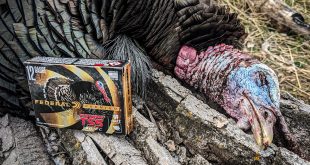No Decoys, No Problem!
By Todd Helms
There’s an art to calling turkeys and it’s old. I’m not talking 1994 old either, I’m talking Native American, wingbone calls old and while calling turkeys is an age old tactic, decoying turkeys is a new thing, think the past 35 years or so, at least for ultra-realistic, plastic versions and our uber-reliance on them to kill turkeys. Some methods of decoying are much newer such as reaping, which actually has roots in Native Americans “fanning” birds into arrow range and while I won’t get into the ethical debate around modern-day reaping, I’m here to tell you that the single most rewarding way I’ve found to harvest my spring gobblers is WITHOUT using a decoy.
That’s right, no decoys equals no hassle and punched tags!
Now, I’m not a purist and will never claim to be, but there are times when hunting turkeys without decoys is not only rewardingly simple, it’s effective and the best choice. Stay with me while I break it down for you.
By ditching the decoys you are free to move more freely and cover more miles in the turkey woods. Out West we normally rack up 10 or more miles a day running and gunning in search of Ol’ Thomas, often in the same country we hunt elk in during September. The two tactics are strikingly similar actually, right down to the lack of decoys. While not using a decoy out West is primarily a nod to being more mobile, you folks back East can benefit from the increased stealth you will enjoy when not lugging a pair of more of decoys through the thick woods and hills of your home states as well.
A turkey’s hearing is almost as acute as his eyesight and decoys scraping through brush, even in a bag will tip a gobbler off that you’re skulking about his woods. Now, if you’re setting up on a field edge and planting your butt in the dirt for hours on end, hauling decoys with you is not a big deal but if you’re the run and gun type, there’s a better more artful, more challenging and wickedly deceptive way to tag your bird and it relies heavily upon good old fashioned woodcraft paired with a modern marvel, the onX Hunt App.
But before I get too far into the weeds let’s go back to a gobbler’s hearing. It’s sharp, so sharp that he can pinpoint your exact location with little more than a few yelps to go on. I’ve experienced this time and time again and have used it against many wily, old longbeards. My Montana Tom from last spring only gobbled once before he magically appeared over two hours after I first struck him. I was obviously caught off guard when his bright head popped up over a small rise only 20 yards in front of me. Luckily, I was still ready for him and when he ducked behind a big Cottonwood I jerked up the gun and plastered him as he stepped out the other side. Phew! That was a close one. It’s also a prime example of just what I’m talking about here. That bird knew exactly where I was and came straight to me, albeit sneakily. His path was in fact so direct that he missed spotting the hen decoy to his right… that’s correct, he never saw it. Why did I carry it in there? Habit I guess but a habit I’m slowly stepping away from.
The biggest takeaways from last year’s hunt were to never give up on a bird and to use the terrain to your advantage. When hunting without a decoy always set up so the bird has to be in gun range to see you. Turkey’s in hilly or broken country are used to dealing with topography and will quite often peek over a ridge or sneak around the toe of one when closing the gap to what they think is a hot hen purring and pecking away in the leaves just waiting for his affections. Thick cover can produce the same results. Don’t give them a chance to see where you’re calling from without offering you a shot.
Another lost art in turkey hunting is to slow down and take your time. By doing this you’ll move more quietly and be in a better position to react when you do strike a gobbler. Soaking in the sights and sounds of the spring turkey woods is a big part of why most of us enjoy hunting turkeys anyway so ease up and you’ll likely be more successful.
All of this brings me to the onX Hunt App… this is a turkey hunter’s best friend in country they’ve not hunted before. The app and its 3D feature allow you to “scout ahead” without having to walk it. In short, you’ll have an idea of what lies in front of you before you ever get there. This is a huge advantage when you’re not hunting with decoys and need to play the terrain. Whip out your phone, dial up the onX Hunt App and check to see what terrain features lay between you and that gobbler that you can employ in your ambush. Using the tech available to us is as important as having old fashioned woodsmanship skills and when the two work as one, the turkey’s aren’t safe.
In closing, if you’re looking for a more challenging, rewarding, stealthy and old school way of taking a gobbler, ditch the decoys! Immerse yourself in the woods and soak in what they have to teach you. You just might be glad you did.
 Eastmans' Official Blog | Mule Deer, Antelope, Elk Hunting and Bowhunting Magazine | Eastmans' Hunting Journals
Eastmans' Official Blog | Mule Deer, Antelope, Elk Hunting and Bowhunting Magazine | Eastmans' Hunting Journals




